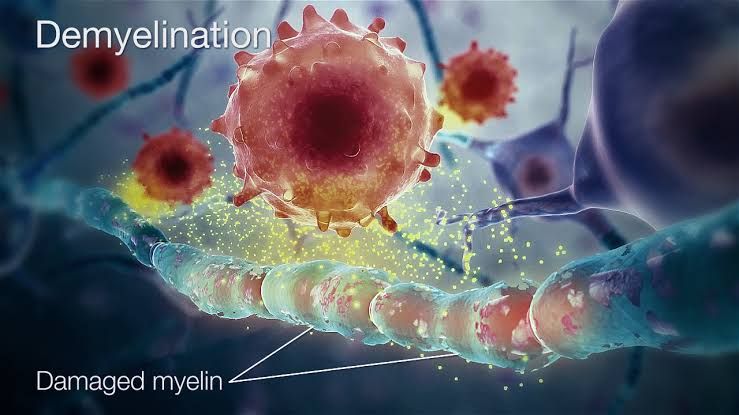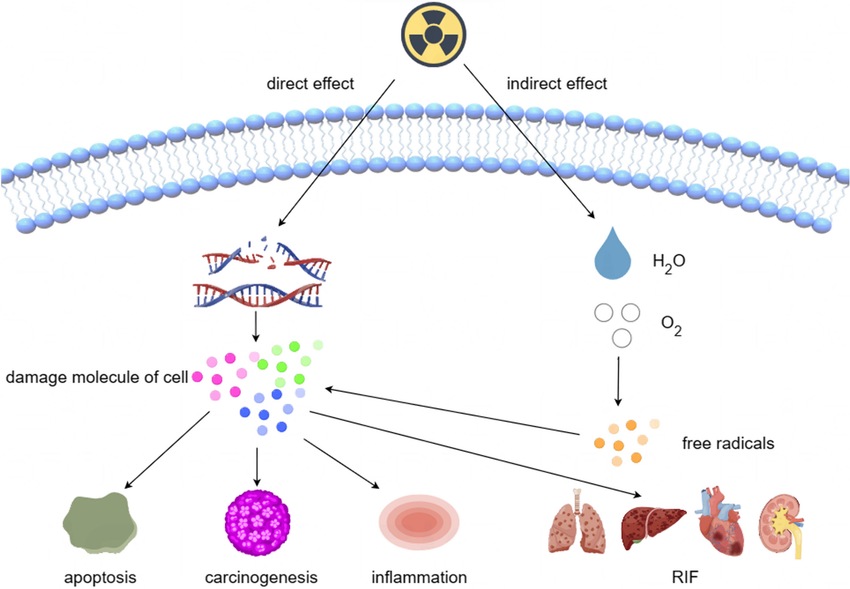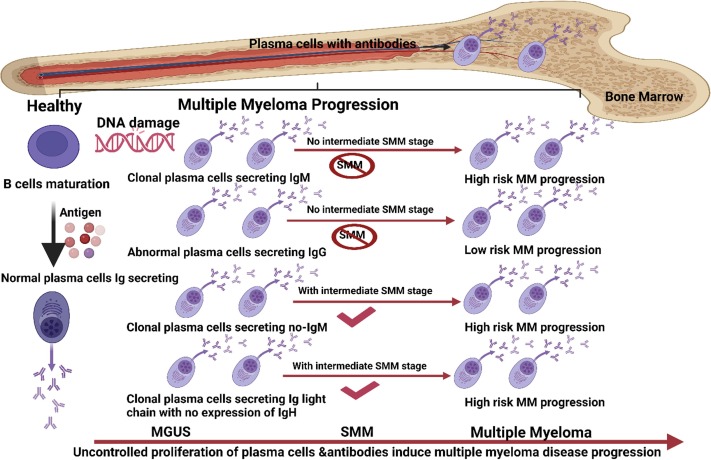
General Features of Demyelinating Diseases
Demyelinating diseases are a group of neurological disorders characterized by the destruction or damage of myelin, the protective sheath that surrounds nerve fibers in the central nervous system (CNS). This damage disrupts communication between neurons and can lead to a variety of neurological symptoms. The most well-known demyelinating disease is Multiple Sclerosis (MS), but other conditions, such as Neuromyelitis Optica (NMO) and Acute Disseminated Encephalomyelitis (ADEM), also fall under this category.
Clinical Characteristics of Multiple Sclerosis
Multiple Sclerosis is an autoimmune disorder where the immune system mistakenly attacks the myelin in the CNS. The clinical presentation of MS can vary widely among individuals, but common features include:
- Symptoms: Patients may experience a range of symptoms including:
- Visual disturbances (e.g., optic neuritis)
- Sensory changes (e.g., numbness, tingling)
- Motor dysfunction (e.g., weakness, spasticity)
- Coordination and balance issues
- Cognitive impairment
- Fatigue
- Relapsing-Remitting Course: Most patients initially present with a relapsing-remitting form of MS, characterized by episodes of neurological symptoms followed by periods of partial or complete recovery.
- Progressive Forms: Over time, some patients may transition to secondary progressive MS, where there is a gradual worsening of symptoms without distinct relapses.
- Age and Gender: MS typically affects young adults, with a higher prevalence in women than men.
- Geographic Variation: The incidence and prevalence of MS vary geographically, being more common in temperate climates compared to tropical regions.
Morphological Characteristics of Multiple Sclerosis
The morphological features observed in Multiple Sclerosis are primarily identified through neuroimaging techniques such as MRI and histopathological examination:
- Plaques or Lesions: In MS, demyelination leads to the formation of plaques or lesions within the white matter of the brain and spinal cord. These lesions appear as hyperintense areas on T2-weighted MRI scans.
- Inflammatory Infiltrates: Histologically, MS plaques contain inflammatory cells such as lymphocytes and macrophages that contribute to myelin destruction.
- Axonal Damage: In addition to demyelination, there is often accompanying axonal injury which can lead to permanent neurological deficits.
- Oligodendrocyte Loss: Oligodendrocytes are responsible for producing myelin in the CNS; their loss is a key feature in MS pathology.
- Chronic Changes: Over time, chronic lesions may develop into sclerotic plaques that contain little to no myelin but may still have residual axons.
- Atrophy: Progressive forms of MS are associated with brain atrophy due to ongoing neuronal loss and degeneration over time.
In summary, Multiple Sclerosis exemplifies many general features seen in demyelinating diseases through its clinical manifestations and distinctive morphological characteristics observed via imaging and histology.
Axonal Degeneration and Injuries
Axonal degeneration is a critical process that occurs in both developmental and pathological contexts within the nervous system. Understanding the mechanisms of axonal degeneration is essential for developing therapeutic strategies for neural injuries and neurodegenerative diseases.
Types of Axonal Degeneration
- Wallerian Degeneration (WD): This is a well-characterized form of axonal degeneration that occurs following injury to a peripheral nerve. When an axon is severed, the distal segment undergoes degeneration, while the proximal segment can regenerate. WD involves several cellular responses:
- Schwann Cell Activation: Following axonal injury, Schwann cells dedifferentiate, proliferate, and align to form structures known as Büngner bands, which guide regenerating axons.
- Macrophage Recruitment: Hematogenous macrophages are recruited to clear myelin debris from the injured site, facilitating regeneration.
- Molecular Changes: There is an upregulation of neurotrophins and cytokines that support nerve regeneration.
- Axon Pruning: During development, neurons initially form excessive connections that are later refined through selective elimination of unnecessary axons. This process can involve:
- Clipping or Fragmentation: Axons may be clipped from their parent neuron or undergo fragmentation before being cleared by phagocytes.
- Retraction: Some axons may retract without significant fragmentation, maintaining their structural integrity while withdrawing from certain areas.
- Pathological Axonal Degeneration: In neurodegenerative diseases such as Alzheimer’s disease or multiple sclerosis, axonal degeneration can occur due to various factors:
- Traumatic Injury: Physical trauma to nerves can result in immediate axonal damage followed by secondary degeneration processes:
- Immediate Effects: Direct mechanical injury leads to disruption of the axon and surrounding tissues.
- Secondary Degeneration: Following initial injury, processes such as inflammation and oxidative stress can exacerbate damage over time.
- Neuropathic Pain and Adaptive Responses: Axonal injury often leads not only to loss of function but also to adaptive changes that may result in neuropathic pain. This includes alterations in sensory pathways and increased sensitivity due to changes in neuronal excitability.
- Regenerative Capacity: The ability of peripheral nerves to regenerate after injury is notable; typically, regeneration occurs at rates of 3–4 mm/day after crush injuries and 2–3 mm/day after complete sectioning. Factors influencing this include:
- The presence of supportive glial cells (like Schwann cells).
- The expression of growth factors that promote neuronal survival and regrowth.
In summary, understanding the diverse mechanisms underlying axonal degeneration—ranging from Wallerian degeneration following peripheral nerve injury to developmental pruning—provides insight into potential therapeutic targets for enhancing nerve repair and addressing neurodegenerative conditions.
Causes of Peripheral Neuropathy
Peripheral neuropathy can arise from a multitude of causes, which can be broadly categorized into several groups:
- Diabetes: Diabetic neuropathy occurs due to high blood sugar levels that damage nerve fibers, particularly in the legs and feet.
- Infections: Certain infections, such as Lyme disease, shingles (herpes zoster), and HIV/AIDS, can lead to peripheral nerve damage.
- Inherited Disorders: Genetic conditions like Charcot-Marie-Tooth disease can cause peripheral neuropathy through inherited mutations affecting nerve function.
- Trauma or Injury: Physical injuries that compress or damage nerves can result in peripheral neuropathy. This includes repetitive stress injuries or accidents leading to nerve damage.
- Toxins: Exposure to toxic substances, including heavy metals (like lead and mercury) and certain chemotherapy drugs, can harm peripheral nerves.
- Autoimmune Diseases: Conditions such as rheumatoid arthritis or lupus may cause the immune system to attack nerve tissues, resulting in neuropathy.
- Vitamin Deficiencies: Deficiencies in vitamins B1 (thiamine), B6 (pyridoxine), B12 (cobalamin), E, and niacin can lead to nerve damage due to their essential roles in maintaining healthy nerve function.
- Kidney Disorders: Chronic kidney disease can lead to an accumulation of toxins in the body that may affect nerve health.
- Hormonal Imbalances: Conditions like hypothyroidism can contribute to peripheral neuropathy by disrupting normal metabolic processes that support nerve health.
- Alcoholism: Chronic alcohol abuse can lead to nutritional deficiencies and direct toxic effects on nerves, causing peripheral neuropathy.
- Other Medical Conditions: Various other conditions such as liver disease, certain cancers, and systemic diseases may also contribute to the development of peripheral neuropathy.
Types of Peripheral Neuropathy
Peripheral neuropathies are classified into several types based on the affected nerves:
- Motor Neuropathy: This type affects the nerves responsible for muscle control and movement. Symptoms may include muscle weakness, cramps, twitching, and loss of muscle mass.
- Sensory Neuropathy: Sensory nerves transmit information about sensations such as pain, temperature, and touch. Damage here leads to symptoms like numbness, tingling sensations, burning pain, or loss of sensation entirely.
- Autonomic Neuropathy: This type impacts autonomic nerves that control involuntary bodily functions such as heart rate, digestion, and sweating. Symptoms may include dizziness upon standing (orthostatic hypotension), digestive issues (like constipation or diarrhea), and problems with bladder control.
- Combination Neuropathies: Some individuals may experience a combination of motor and sensory symptoms or other types simultaneously; this is referred to as combination neuropathies.
The understanding of these causes and types is crucial for diagnosis and treatment planning for individuals suffering from peripheral neuropathies.







